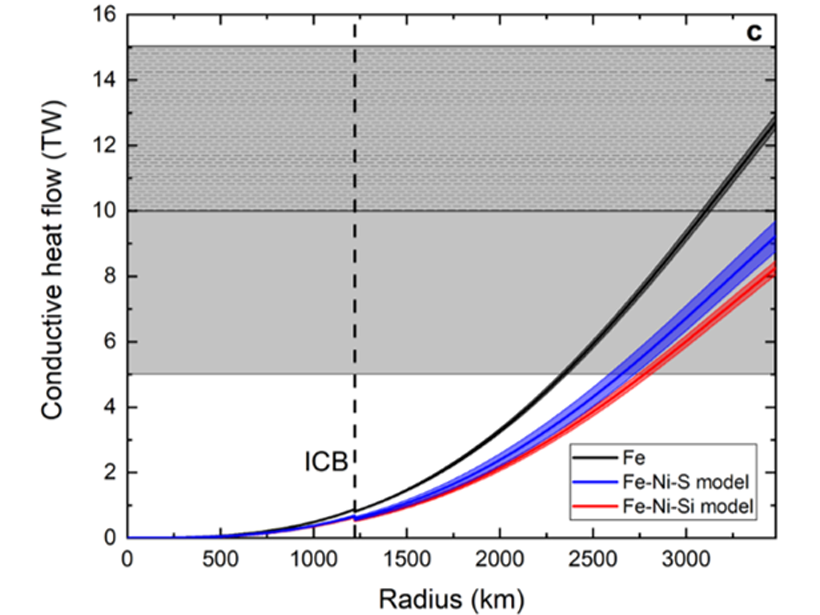Source: Geophysical Research Letters
The Earth’s magnetic field shields humanity from the ionizing radiation of solar wind, and it also remains critical to modern navigation systems. The field is produced in the core by a dynamo that requires the fluid motion of liquid iron alloy and electrical conductivity.
However, the driving forces behind the geodynamo have been debated, since estimates for the total heat flow across the core-mantle boundary (CMB) range from 5-15 TW. Most recent estimates are on the high end of this range (10-15 TW), which call into question the timing of core formation and the relative importance of thermal versus chemically driven convection in the outer core.
Experimental studies of the properties of liquid iron at high pressures and temperatures remain extremely challenging. Yong et al. [2019] measured the electrical resistivity of liquid and solid iron up to the highest pressures yet (24 GPa) for a large-volume apparatus, and they found that resistivity is constant with pressure along the melting boundary. These results were used to estimate a total heat flow of 8-9 TW across the CMB.
The results imply that outer-core convection can be thermally driven even before the solid inner core formed, which is consistent with paleomagnetic data that suggest the geomagnetic field existed as early as 4.2 billion years ago.
Citation: Yong, W., Secco, R. A., Littleton, J. A. H., & Silber, R. E. [2019]. The iron invariance: Implications for thermal convection in Earth’s core. Geophysical Research Letters, 46. https://doi.org/10.1029/2019GL084485
—Steven D. Jacobsen, Editor, Geophysical Research Letters
Text © 2019. The authors. CC BY-NC-ND 3.0
Except where otherwise noted, images are subject to copyright. Any reuse without express permission from the copyright owner is prohibited.

